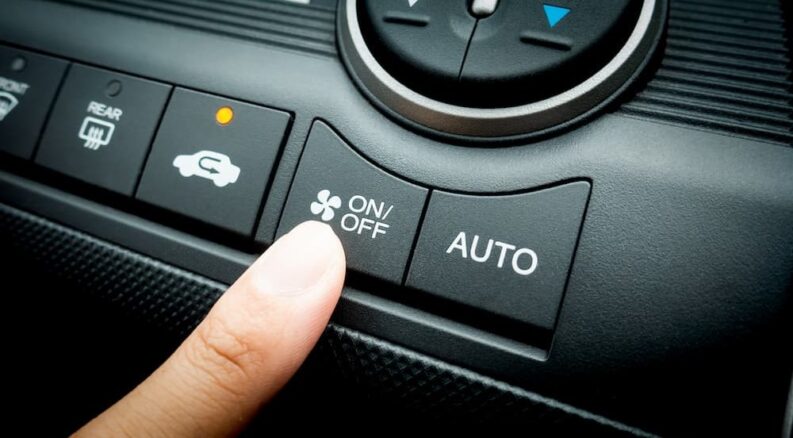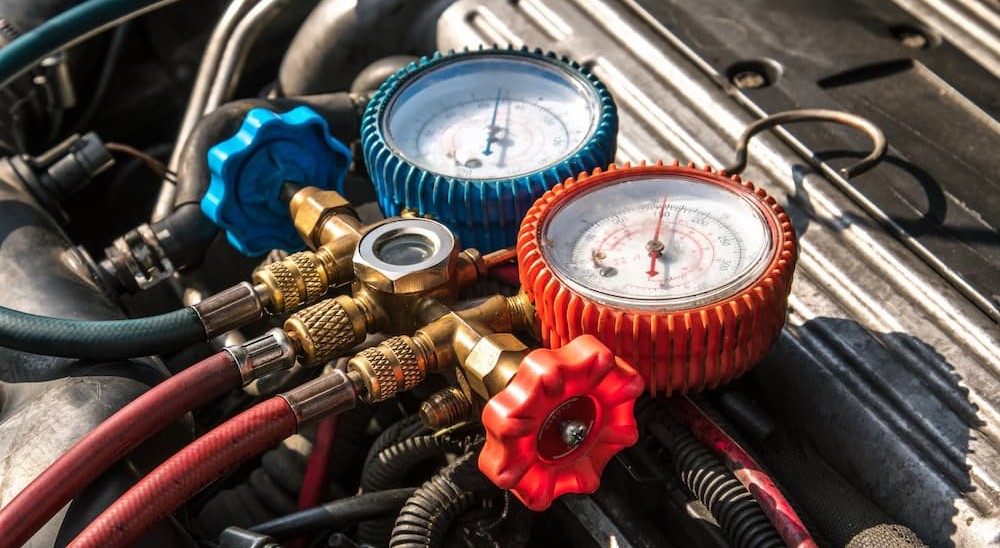When the hot summer months arrive, you’ll be glad for your vehicle’s air conditioner. According to experts, on a sunny 80-degree day, an uncooled car interior can approach 140 degrees in just an hour. Even on cooler days, the cabin temperature can rise by 40 to 50 degrees in the same period. Having a working cooling system is essential for comfort and safety, as is knowing how to keep that system in prime shape. I’m here to give the lowdown on what you should know about maintaining automotive air conditioners, knowing what issues to watch for, and how to fix those issues so you have a cool summer.
How to Maintain a Car Air Conditioner
As I’ve said many times, the best way to fix problems is to prevent them from happening. These maintenance checks and tasks can downplay or prevent many issues, leading to a cooler car, more efficient operation, and less money out of your pocket.
- Keep the vents clean. Dirt, dust clots, and other debris can clog the vents, making the HVAC system operate less efficiently and leading to premature failure.
- Clear the outer inducts and condenser. The inducts are the vents between the hood and windshield, and the AC intake is in this area. Leaves, dirt, and pine needles can easily enter the inducts and limit airflow. The same is true for the condenser, which you’ll find in front of the radiator.
- Replace the cabin air filter according to the automaker’s schedule. The filter removes contaminants, making the cabin air cleaner and safer. If it gets clogged or neglected, it can reduce AC airflow and cause health problems.
- Use the coldest AC setting. Warmer settings cause the HVAC system to alternate between the AC and heater, putting more strain on your vehicle and reducing fuel mileage. You can change how cool the cabin feels by adjusting the fan speed and vent positions.
- Visually inspect the AC system. Look for signs of leakage near the condenser, compressor, and hoses. Leaks can go on for a while before becoming bigger issues, so a visual inspection heads them off early. You can do this inspection as part of an oil change or other scheduled maintenance.
- Run the defroster mode for a few minutes once a week. This mode isn’t just for winter. In the summer, it helps dry out the AC system, reducing the chances of mildew and mold.
- Check the refrigerant levels every 24 months. The AC uses freon gas as a refrigerant, which can leak out or depressurize over time. When the engine is cool, connect a freon gauge to the high-pressure AC service port, then run the engine for a few minutes with the AC on the coldest setting. Repeat for the low-pressure port. The readings should be 25-45 psi on the low port and 250-400 psi on the high port. Work in a well-ventilated area and wear safety glasses and gloves since freon exposure can be harmful.
- Act quickly at the first indication of trouble. I’ll cover those indicators in the next section, but promptly addressing them will minimize repairs and head off potential safety hazards.
Signs of Vehicle Air Conditioning Problems
It’s almost inevitable that an automotive AC system will eventually need some TLC. Debris gets in vents, refrigerant slowly seeps out, and mechanical parts like compressors wear down. Knowing the signs is important so the problems don’t get worse. Remember these common indicators of car AC trouble:
- The AC won’t turn on or isn’t producing cold air even at the higher settings. This can mean everything from a refrigerant leak to a clogged filter or broken compressor.
- You hear odd noises from the AC. These can include buzzing, humming, rattling, grating, or banging, which often means a compressor issue. The AC also may be much louder than normal.
- The airflow is much lower than normal. This could mean clogged vents and filters, or bigger AC problems such as broken fans and compressors.
- There is excessive liquid dripping under your car. Although a little water from the AC isn’t a concern, a sudden increase could be a sign of a leak or clog. A smelly liquid beneath the car is another sign of trouble.
- You see unexplained water or greasy stains on the interior floor. This could be due to a clogged evaporator drain or a leak.
- Strange odors persist. A musty odor may indicate mold in the evaporator and/or a broken dryer, while a gas odor could indicate a dangerous refrigerant leak.
- The air from your AC feels a lot more humid than usual and doesn’t go away.
Remember that if the AC isn’t working properly, it may also indicate other issues with your vehicle. For example, an AC not turning on could be due to an electrical problem rather than a bad compressor. If you’re not sure what the problem is, seek professional advice.
How to Repair a Car’s Air Conditioner
In certain cases, you can fix automotive air conditioner problems at home for a minimal cost. Plugged vents, inducts, and condensers are the easiest things to fix. Use a small brush like a toothbrush, or an AC vent cleaner, which costs about $10. Instructions for changing the cabin filter are in the vehicle manual or the manufacturer’s website.
If the refrigerant is low, often detectable by humming or clicking from the compressor, and there are no obvious leaks, you can pick up an AC recharge kit for $40 to $60 at a reputable auto parts or department store. These kits top off the freon levels and seal small system leaks. Here are the basic steps for using a recharge kit:
- Remove the cap from the low-pressure service port.
- Start the car’s engine.
- Set the AC to the coldest setting.
- Set the fan to the highest setting and turn on recirculation mode.
- Connect the recharge hose fitting to the port and disconnect the trigger.
- Remove the trigger assembly from the can, take off the plastic spacer, and reattach the assembly.
- Shake the can well and reconnect the trigger assembly to the recharge hose.
- Hold the can fully upright and press the trigger. As you press, gently shake the can up and down.
- After 10-15 seconds, release the trigger and let the gauge needle stabilize. (If the kit didn’t come with a gauge, you can connect one to the high-pressure service port.)
- Check the gauge reading and repeat steps 8 and 9 if needed. Do not overfill the system, as this will damage components.
- Once the system is charged, disconnect the hose from the service port, put the cap back on, and shut the engine off.
- Leave the hose connected to the can and store it in a cool, dry place.
Remember to wear safety gloves and goggles, just like when checking the refrigerant levels.
When to Go to an Automotive Professional
Although some AC repair and maintenance tasks are doable with basic DIY skills, you may want to trust a professional for more advanced jobs. Major AC issues like broken compressors and hoses can technically be done at home, but they require removing any remaining freon from the system without letting it escape into the air. Replacing these components can also demand specialized tools and accessories. A professional technician will have the equipment and knowledge to do these repairs safely.
Depending on the vehicle and where you go for repairs, AC hose replacement will cost around $350, including parts and labor, while a new compressor can run over $800. A new AC dryer is in the $300 to $400 range, while having a mechanic recharge your system will likely exceed $200. For a complete AC system replacement, the price could approach $3,000. You can see why catching problems early is important to avoid needing a total system swap.
Stay Cool Every Summer
You don’t want to spend the summer sweltering in your car or sweating out a major repair bill. That’s why you need to stay on top of AC care just like you do with oil changes, coolant flushes, and spark plug replacements. By having a maintenance schedule, recognizing problems early, and knowing what repairs you can do yourself, you can spend more of your money and energy enjoying the bright, sunny roads.



